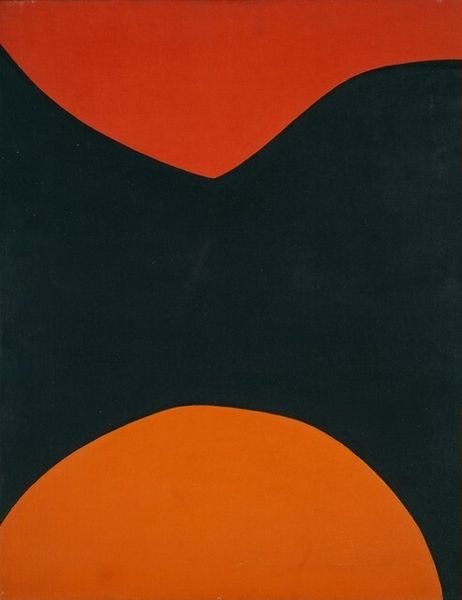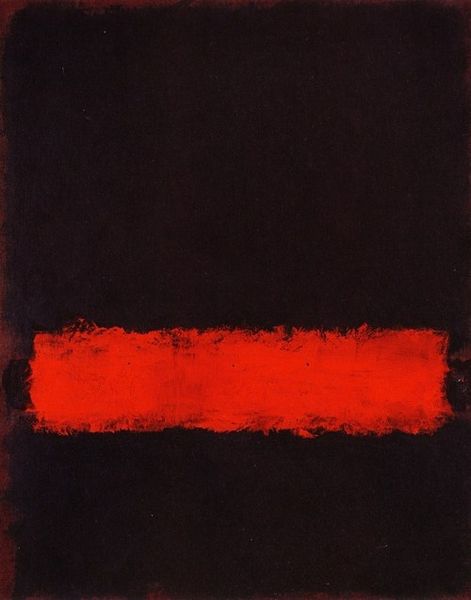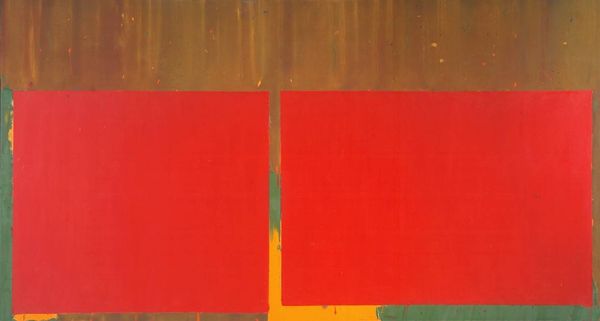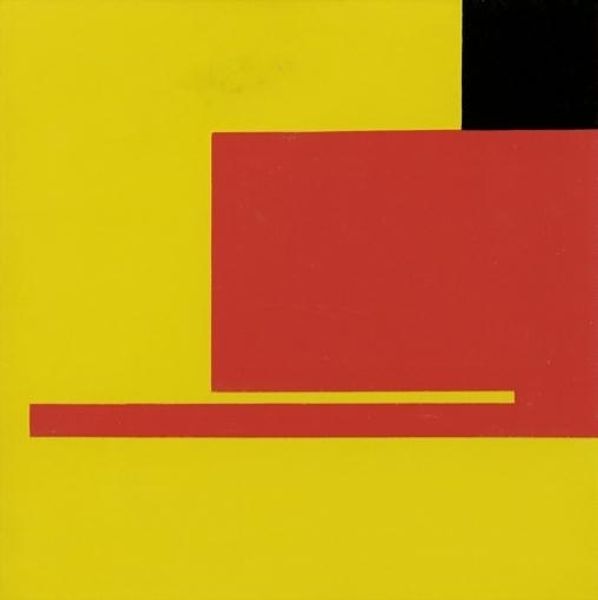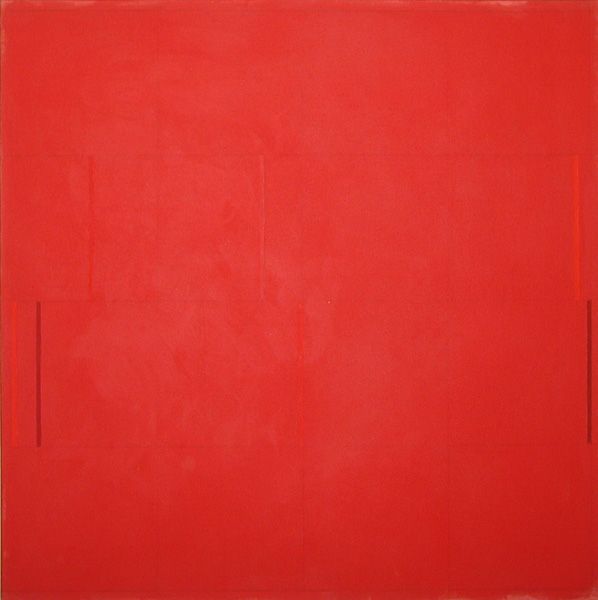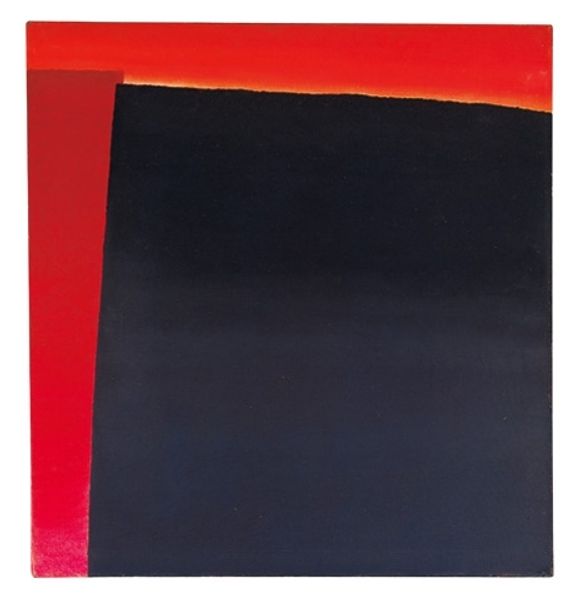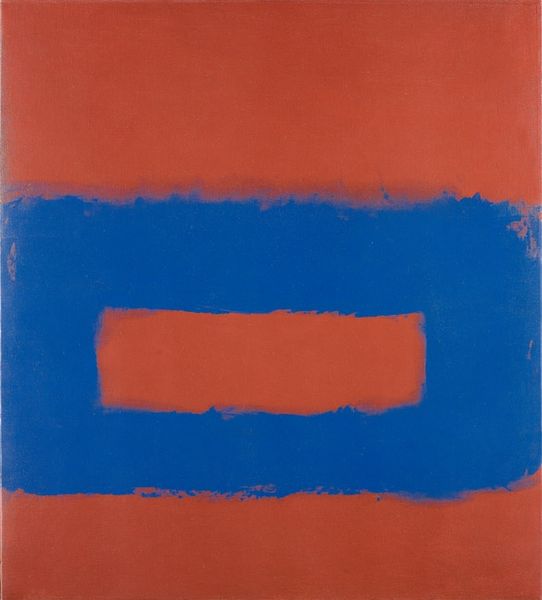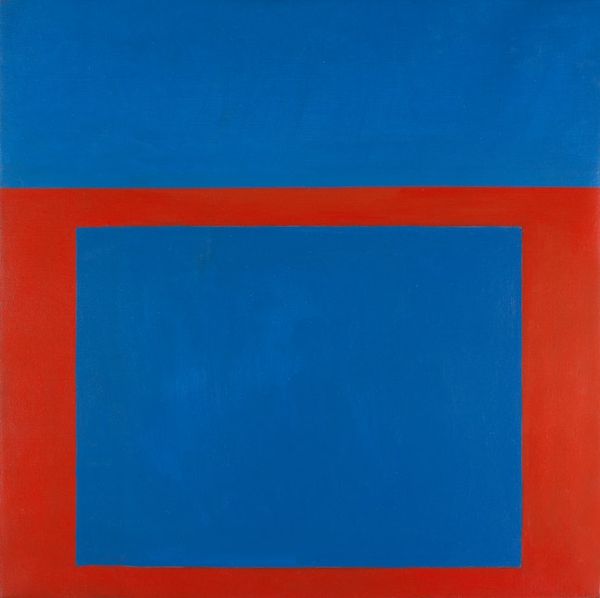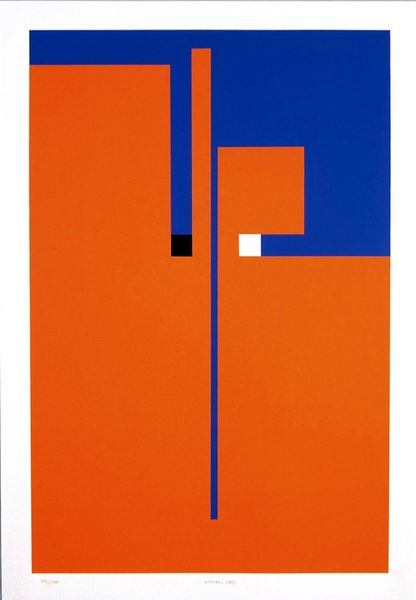
Copyright: Mario Ballocco,Fair Use
Curator: I find this painting almost brutally simple, but quite compelling. Editor: "Induzione figurale (del rettangolo in diagonale) sfalsata," or "Figural Induction (of the Diagonal Rectangle) staggered," by Mario Ballocco, made in 1977. Its aggressive, immediate impact stems from its commitment to pure, geometric forms. Curator: Aggressive, certainly. That stark red form, battling against the recessive black, demands attention. It strikes me that Ballocco’s focus here transcends mere representation. It seems he wants us to consider the dialogue between shape and space itself. The way the central form cuts across the canvas creates a powerful visual tension, an imbalance almost, wouldn't you agree? Editor: Agreed. But this imbalance might speak to its materiality and the socio-political underpinnings of production itself. Consider the pure red and its production in chemical factories, perhaps in northern Italy in the '70s, when manufacturing was shifting... even struggling. The 'staggered' title suggests an interruption. This could mirror Ballocco's engagement with Italy's volatile labor market and post-Fordist ideals. Curator: Interesting perspective, but I'm more drawn to the painting’s self-referential qualities. This composition seems an almost archetypal exploration of form, the diagonal pushing against the rectangle—the primary elements of abstract art reduced to their essence. It is all about line, colour and form. It offers a dynamic visual field simply with shape arrangement. Editor: But we must ask, whose form, whose line? Ballocco, through geometric simplicity, prompts consideration of what went into creating this acrylic paint—its provenance. In its abstraction, it invites us to look beneath surface and contemplate the realities of labour. And I would suggest that Ballocco subtly weaves narratives about industrial innovation that might, at first viewing, go unnoticed. Curator: Perhaps. I remain convinced that we are challenged, in this piece, to move beyond the mere surface of things—and focus on our perception and cognition through spatial relationships alone. Editor: An invitation indeed! Thank you, it does make you consider so much about industry, material and society.
Comments
No comments
Be the first to comment and join the conversation on the ultimate creative platform.
